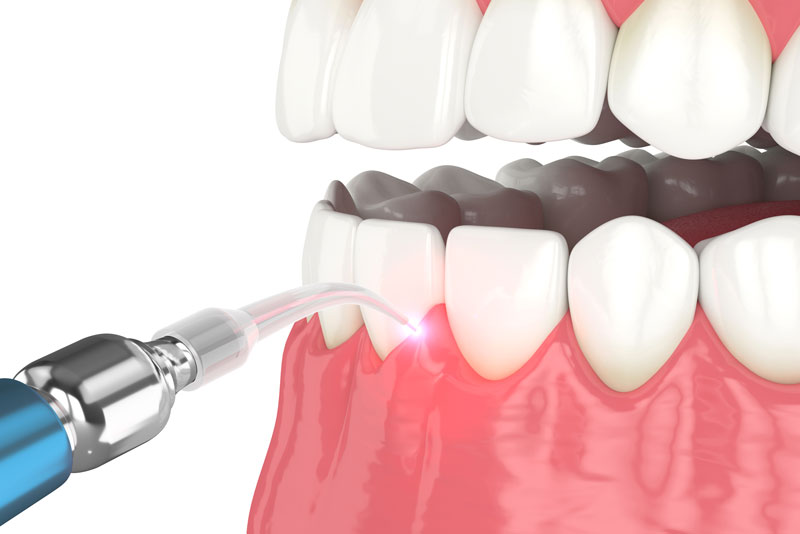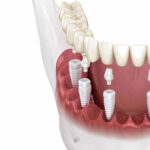Once the stuff of science fiction, lasers continue to find more applications in the medical sector. In the field of dentistry specifically, lasers have been making gum disease treatment more affordable and effective for all.
One day soon, you might have a routine dental procedure done with the help of a strong, yet extremely precise beam of laser light, instead of a drill or a probe. Here’s how that laser light would be used if you were battling gum disease.
What Are Lasers Used For In A Dentist’s Office?
Because it was once only the stuff of science fiction, fantastical ray guns and light canons are the things many people associate with laser technology. And while lasers can be used for heating and cutting, their usage spans much more than that in the world of dentistry.
Dental lasers are often used to help clinicians detect diseases and decay. The can remove damaged tissue, seal minor cavities, treat canker sores, whiten teeth, prep teeth for dental bonding cement and so much more.
Laser light of a specific wavelength, for example, could discover tiny pits and fissures forming on the biting surfaces of the tooth – issues traditional dental instrument would likely miss. Lasers can also help find dental calculus below the surface of the gums, aid in the early detection of oral cancer, and pinpoint where healthy tissue ends and diseased tissue begins.
How Do Lasers Help Stop Receding Gums?
There are many benefits to treating soft tissue with lasers. They’re minimally invasive tools that give the clinician the ability to take away less tissue than conventional methods.
Used in gum surgery, for instance, lasers can treat gum disease by killing harmful bacteria in deep pockets beneath the gum line and remove the diseased tissue without damaging the healthful tissue. They may also remove the thin layer of cells which inhibits reattachment of the gum along with bone tissues to the tooth, while sealing off the adjacent blood vessels.
Why Opt For A Laser Procedure Over Alternatives?
Laser procedures usually result in less bleeding and pain than treatment done primarily with drills and other mechanical hand tools. Because lasers can remove soft tissue more efficiently than conventional tools, patients typically heal from laser treatment much faster. On top of all of that, the efficiency of lasers means there’s less soft tissue that needs to heal and less soft tissue damage for bacteria to threaten – so there’s a lower risk of infections.
Key Takeaways
As lasers become more common in the dental office, these high-tech tools may be incorporated into more and more routine dental procedures. These minimally invasive dental tools are ideal for combatting disease and decay in the early stage, but they may not be the best route for patients with advanced gum disease.
Talk to a Bloomfield Hill, MI dentist today to learn more about laser procedures available in their office and then schedule a consultation.





